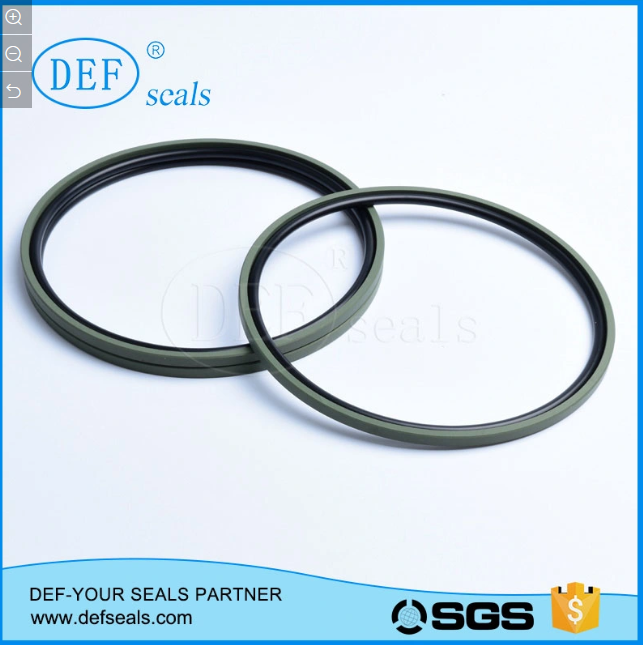Usage of rubber hoses
2023-04-18
Rubber hose is a steel wire woven hose. The rubber hose consists of an inner rubber layer, a layer of steel wire braid, and an outer rubber layer. Suitable for conveying hydraulic fluids such as alcohols, fuels, lubricants, emulsions, etc.
The distinguishing feature between rubber hoses and hard pipes is their flexibility. The design of hoses varies greatly depending on the operating conditions and performance requirements. Common parameters include size, pressure, weight, length, bending, chemical durability, etc.
The application field of industrial hose covers various industrial production, manufacturing and circulation fields, and is widely used in petroleum, chemical industry, ships, docks, tank cars, agriculture, food, beverage, medicine and other industries, as well as cold and hot water, steam, ventilation, cooling, fire fighting, hydraulic pressure, and media such as gas, water, fog, muddy water, sand, iron particles and so on. Industrial grade rubber hoses, whether the medium is water, gas, oil, chemicals, or other materials, usually consist of inner rubber, outer rubber, and intermediate layer. The middle layer is usually composed of woven components, which enhance the strength of the hose. In addition, there are common embedded steel wires between the inner and outer adhesives, suitable for vacuum negative pressure operations. There are also conductive wires that are suitable for working environments where sparks are prohibited, such as fuel.
What are the classifications of rubber hoses
In order to adapt to the physical and chemical conditions of various industries, industrial hoses usually have very strict execution standards for the chemical raw materials and processes of internal and external colloids. According to the classification of working conditions, common ones are:
Water delivery hose. Used for irrigation, horticulture, construction, firefighting, equipment and tank car cleaning, agricultural fertilizers, manure, industrial sewage drainage, and other aspects. PVC and EPDM are the most common internal adhesive materials.
Hot water and steam hoses. Used for cooling water of refrigeration equipment, hot and cold water of engine engines, food processing, especially for hot water and saturated steam in dairy factories. EPDM is the most common internal adhesive material.
Beverage and food hoses. Used for non lipid products such as milk, carbonates, orange juice, beer, animal and vegetable oils, drinking water, etc. The inner rubber material is mostly NR or synthetic rubber. Usually requires certification of food grade FDA, DVGWA, KTW, or CE standards
Air hose. Used in compressors, pneumatic devices, mining, construction, and other fields. The internal adhesive materials are mainly NBR, PVC composite, PU, and SBR. There are usually strict requirements for the applicable pressure.
Weld the hose. Used for gas welding, cutting, and other aspects. The inner rubber material is mostly NBR or synthetic rubber, and the outer rubber is usually colored in red, blue, yellow, etc. to indicate the specific gas.
Material suction hose. It is used to transport solid particles such as gas, fog, powder, particle, fiber, gravel, cement, fertilizer, coal dust, quicksand, concrete, gypsum, etc. The internal adhesive materials are mostly NR, NBR, SBR, and PU. Usually, the outer glue has high wear resistance.
Oil delivery hose. Used in fuel, diesel, kerosene, petroleum, and other fields. The internal adhesive materials are mostly NBR, PVC composite, and SBR. Usually, there is conductive steel wire between the inner and outer glue to prevent sparks.
Chemical hoses. Used in acidic, chemical solutions, etc. EPDM is the most common internal adhesive material. Usually, this type requires customized materials and design solutions
1、 Precautions for using rubber hoses:
1. Be sure to use rubber hoses within the recommended temperature and pressure range.
2. The rubber hose expands and contracts with its internal pressure. Please cut the hose to a slightly longer length than you need.
3. When applying pressure, please slowly open and close any valves to avoid shock pressure.
4. Please use the rubber hose above its bending radius, otherwise it may cause the hose to break and reduce its pressure resistance.
5. When using powder or particles, it may cause wear and tear depending on the conditions. Please try to enlarge the bending radius of the rubber hose as much as possible.
6. Do not use near metal parts in extreme bending conditions.
7. Do not directly contact or approach open flames with the hose.
8. Please do not step on the rubber hose with equal pressure from the vehicle.
For fluids:
1. The rubber hose used should be suitable for the fluid being conveyed.
2. Before using the hose on oil, powder, toxic chemicals, and strong acids or alkalis, please consult the product provider first.
2、 Precautions during assembly:
1. Please select a hose joint that is suitable for the size of the hose.
2. When inserting the tail part of the joint into the rubber tube, apply oil to the rubber tube and the tail of the tube, and do not use fire to bake. If it is not possible to insert, hot water can be used to heat the hose and insert the connector.
3. Please fully insert the serrated end of the connector into the rubber hose.
4. Do not use a push-in joint once, as it may cause the hose to break.
5. Please avoid excessive tying with iron wire and choose a dedicated sleeve or tie.
6. Please avoid using joints with scratches or rust.
3、 Precautions during inspection:
1. Pre use inspection: Before using the rubber hose, please confirm whether there are any abnormal injuries, hardening, softening, discoloration, etc. on the appearance of the hose.
2. Regular inspection: During the use of the rubber hose, please ensure to carry out a regular inspection once a month.
News







